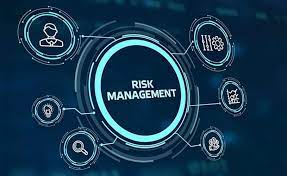Navigating the Complexities of IT Risk Management Strategies for a Secure Future

Navigating the Complexities of IT Risk Management Strategies for a Secure Future
Introduction
In the fastevolving landscape of technology businesses are constantly exposed to various risks that can compromise data security disrupt operationsimpact their overall success As organizations increasingly rely on IT systems digital infrastructure the importance of effective IT risk management has become paramount.
Understanding IT Risks
IT risks encompass a wide array of potential threats that can arise from system vulnerabilities cyberattacks data breaches human errors regulatory noncompliance more. These risks pose significant challenges to organizations across all industries requiring a proactive comprehensive approach to mitigate their impact.
Assessing IT Risks
A crucial step in managing IT risks involves conducting thorough risk assessments This involves identifying potential threats evaluating their likelihood of occurrence assessing their potential impact on business operations Various methodologies such as risk matrices risk heat maps scenario analysis can aid in comprehensively understanding prioritizing risks
Strategies for Effective IT Risk Management
Implement Robust Cybersecurity Measures
Employ a multilayered approach to cybersecurity including firewalls encryption antivirus software intrusion detection systems.
Regularly update patch systems to address vulnerabilities and stay protected against evolving threats.
Conduct regular security audits and penetration testing to identify weaknesses reinforce defenses.
Develop a Comprehensive Incident Response Plan
Establish a welldefined incident response plan outlining steps to be taken in the event of a security breach or IT incident.
Designate response teams define their roles and responsibilities for swift coordinated actions.
Conduct drills and simulations to test the effectiveness of the incident response plan and refine it accordingly.
Ensure Regulatory Compliance
Stay updated with relevant regulations and compliance standards in the industry, such as GDPR HIPAA or PCI DSS align IT practices accordingly.
Regularly audit and review internal processes to ensure adherence to compliance requirements, avoiding potential penalties or legal consequences.
Foster a Culture of Security Awareness
Provide comprehensive training programs to educate employees about cybersecurity best practices, emphasizing their role in preventing security threats.
Encourage a culture of vigilance where employees are proactive in reporting suspicious activities or potential security risks
Embrace Continual Risk Monitoring and Adaptation
Implement realtime monitoring tools technologies to detect and respond to emerging threats promptly.
Continuously reassess and update risk management strategies to adapt to evolving technological landscapes and emerging risks.
Conclusion:
In an interconnected digital world, effective IT risk management is indispensable for safeguarding businesses against a myriad of potential threats. By adopting proactive approach leveraging robust cybersecurity measures fostering a culture of security awareness staying agile in response to emerging risks organizations can navigate the complexities of IT risk management and ensure a secure and resilient future. Implementing these strategies will not only mitigate risks but also contribute to building trust enhancing business resilience and sustaining longterm success in todays dynamic business environment.
IT risk assessment is a critical process within an organizations overall risk management strategy Its benefits extend across various dimensions influencing the overall security operational efficiency strategic decisionmaking Here are several key benefits of conducting IT risk assessments:
Identifying Vulnerabilities and Threats
IT risk assessments help in identifying understanding potential vulnerabilities threats within the IT infrastructure. This comprehensive evaluation includes hardware software networks human factors enabling organizations to proactively address weaknesses before they can be exploited by malicious actors.
Prioritizing Risks
Not all risks are equal in terms of potential impact and likelihood. Risk assessments allow organizations to prioritize identified risks based on their severity and potential impact on business operations. This prioritization guides resource allocation risk mitigation efforts focusing on the most critical areas first.
Supporting Decision Making
By providing a clear understanding of existing risks IT risk assessments empower decision-makers to make informed choices. Whether its budget allocation for security measures adopting new technologies or refining existing processes these assessments provide valuable insights for strategic decisionmaking.
Compliance and Regulation Adherence
Many industries have strict regulatory requirements concerning data protection privacy security. Conducting IT risk assessments aids in ensuring compliance with these regulations reducing the likelihood of noncompliance penalties legal consequences.
Improving Security Posture
Assessments serve as a foundation for enhancing an organization's security posture. They reveal gaps and weaknesses in the current security measures allowing for targeted improvements the implementation of robust cybersecurity protocols to better protect against potential threats.
Cost Efficiency
Proactively addressing risks identified through assessments can save significant costs in the long run Investing in preventive measures is often more costeffective than dealing with the aftermath of a security breach including financial losses reputational damage legal liabilities.
Enhancing Business Continuity
Understanding and mitigating IT risks contribute to enhancing business continuity By addressing vulnerabilities potential disruptions organizations can minimize downtime maintain operational continuity swiftly recover from any unexpected incidents or cyberattacks.
Building Stakeholder Confidence
Stakeholders including customers partners investors are increasingly concerned about data security privacy Demonstrating a robust risk assessment process and proactive risk mitigation strategies helps build trust and confidence in the organizations ability to protect sensitive information.
In summary IT risk assessments are integral to proactive risk management. They not only uncover potential threats and vulnerabilities but also enable organizations to implement measures that enhance security compliance verall resilience in todays rapidly evolving digital landscape.